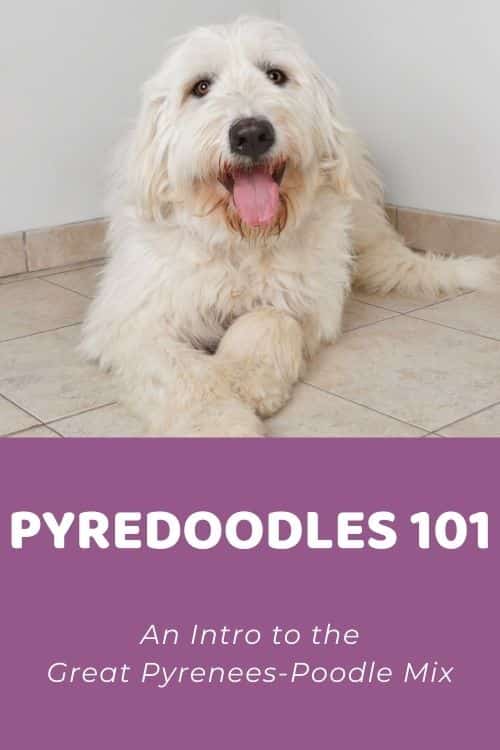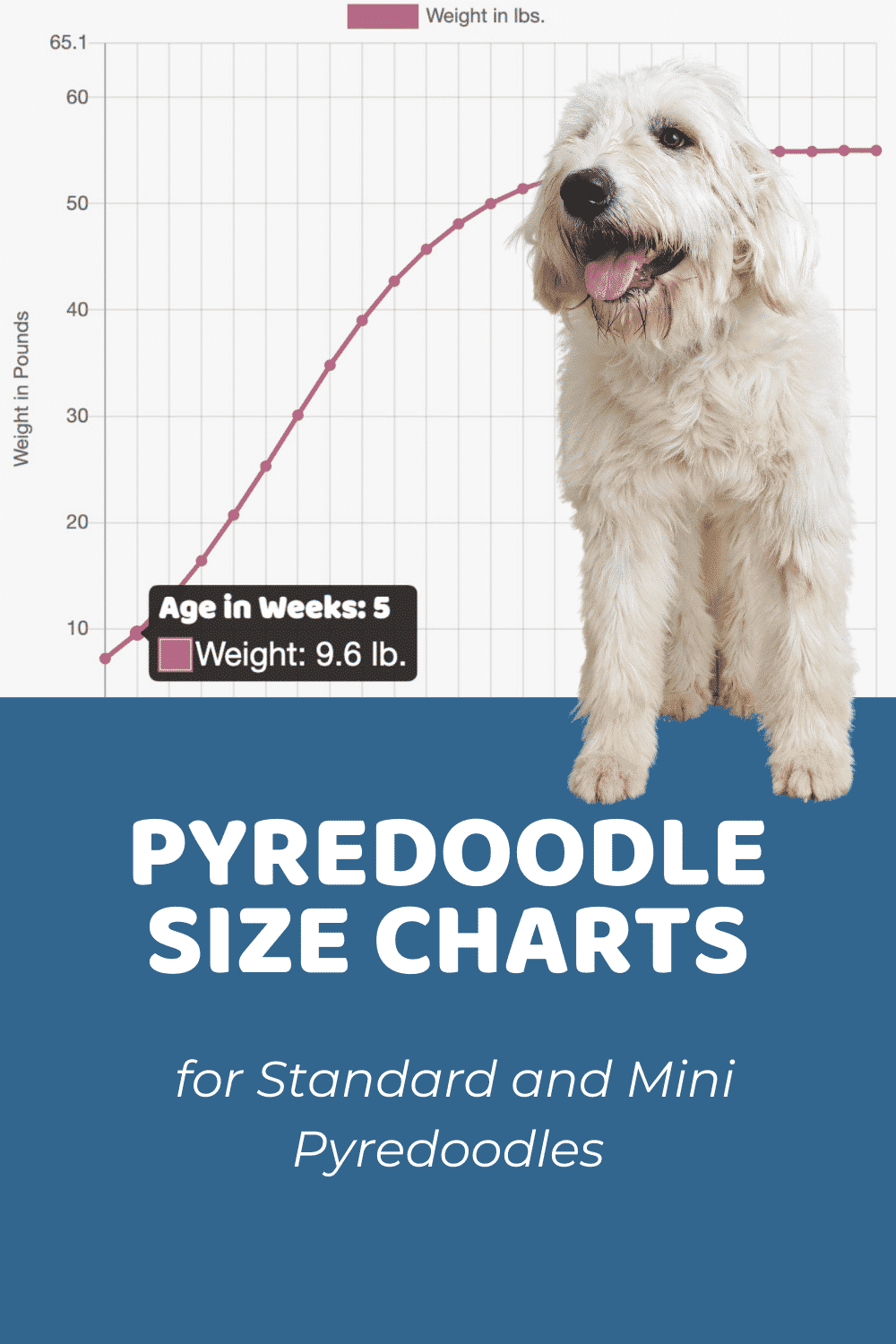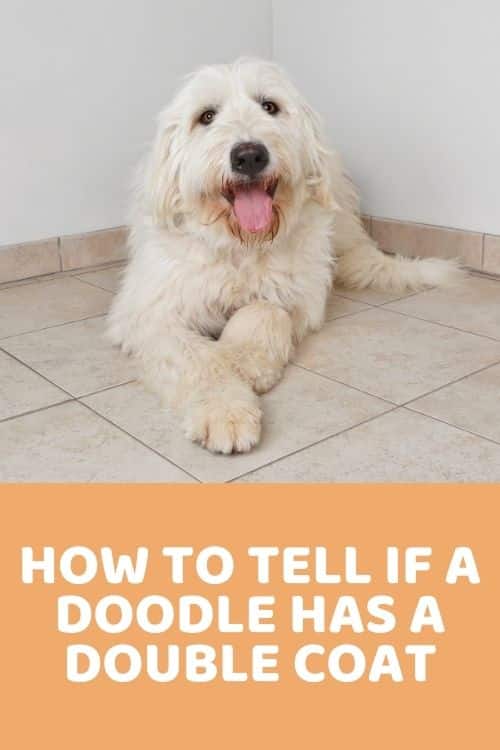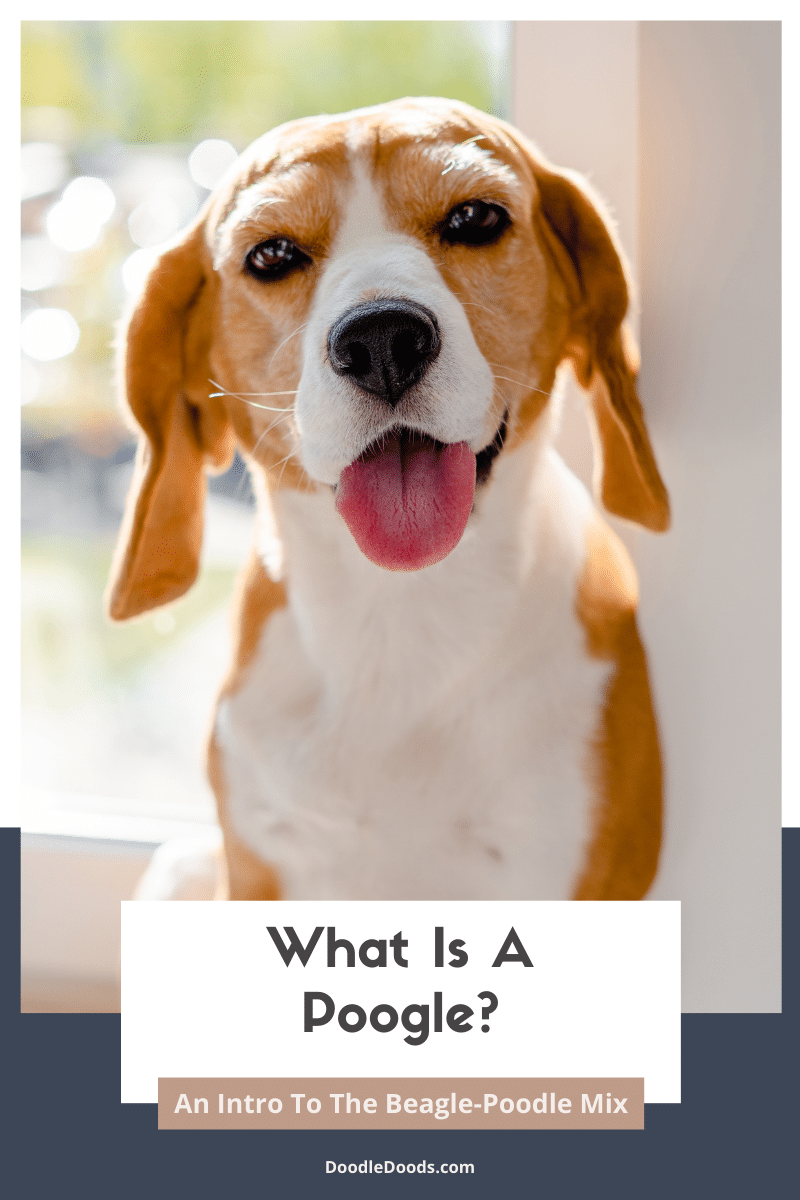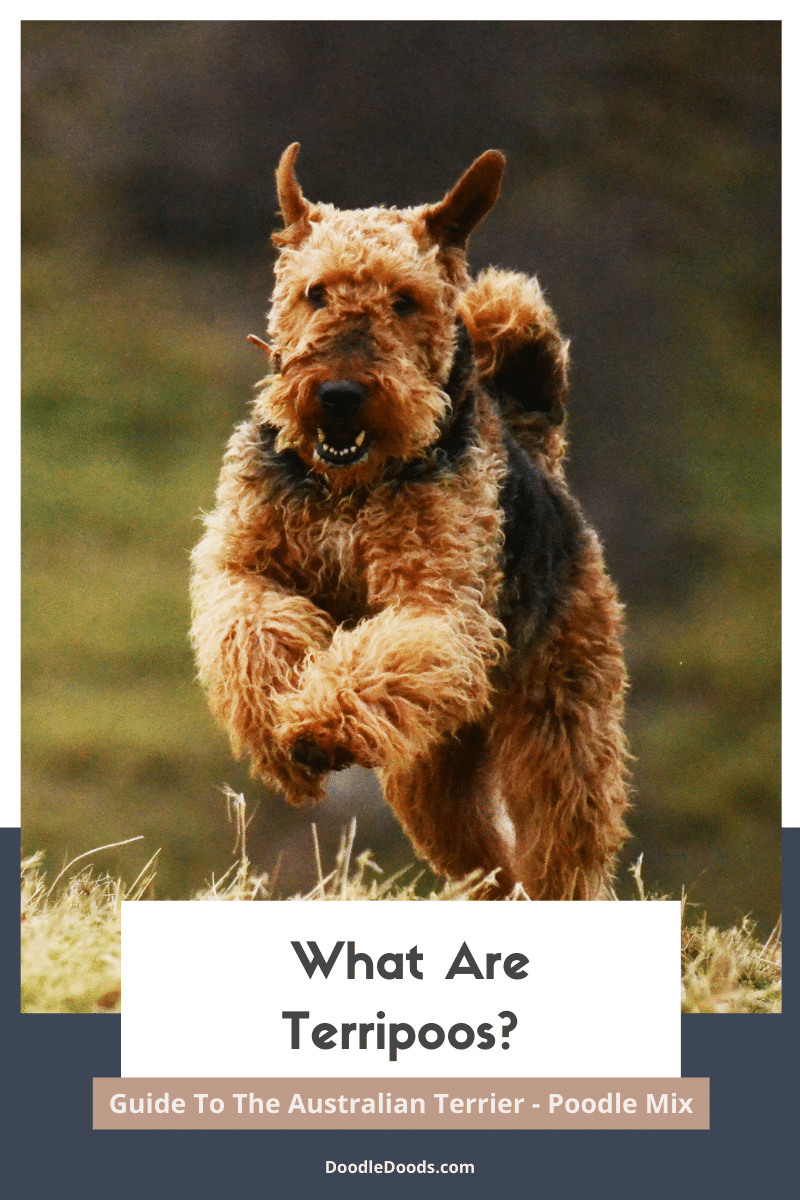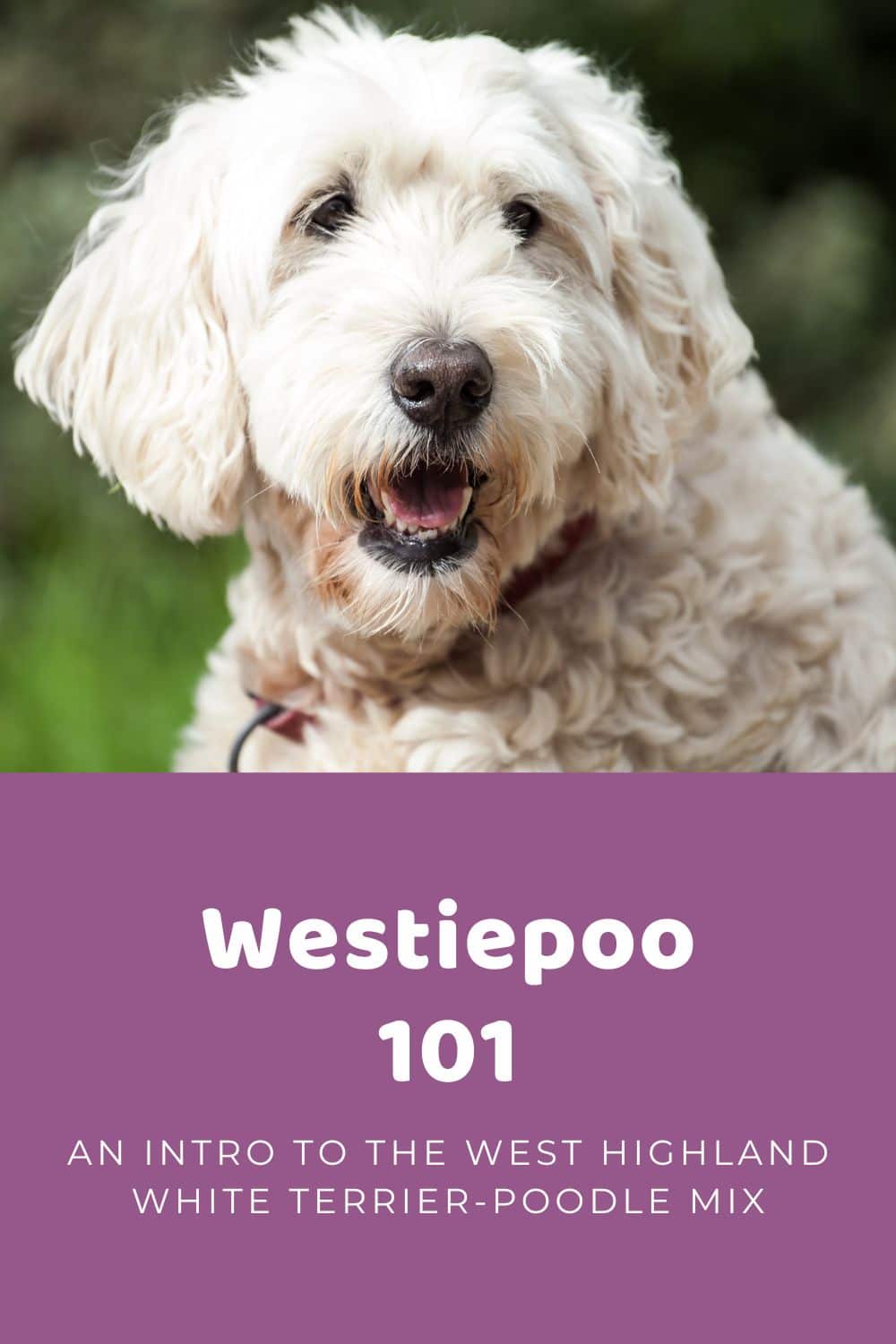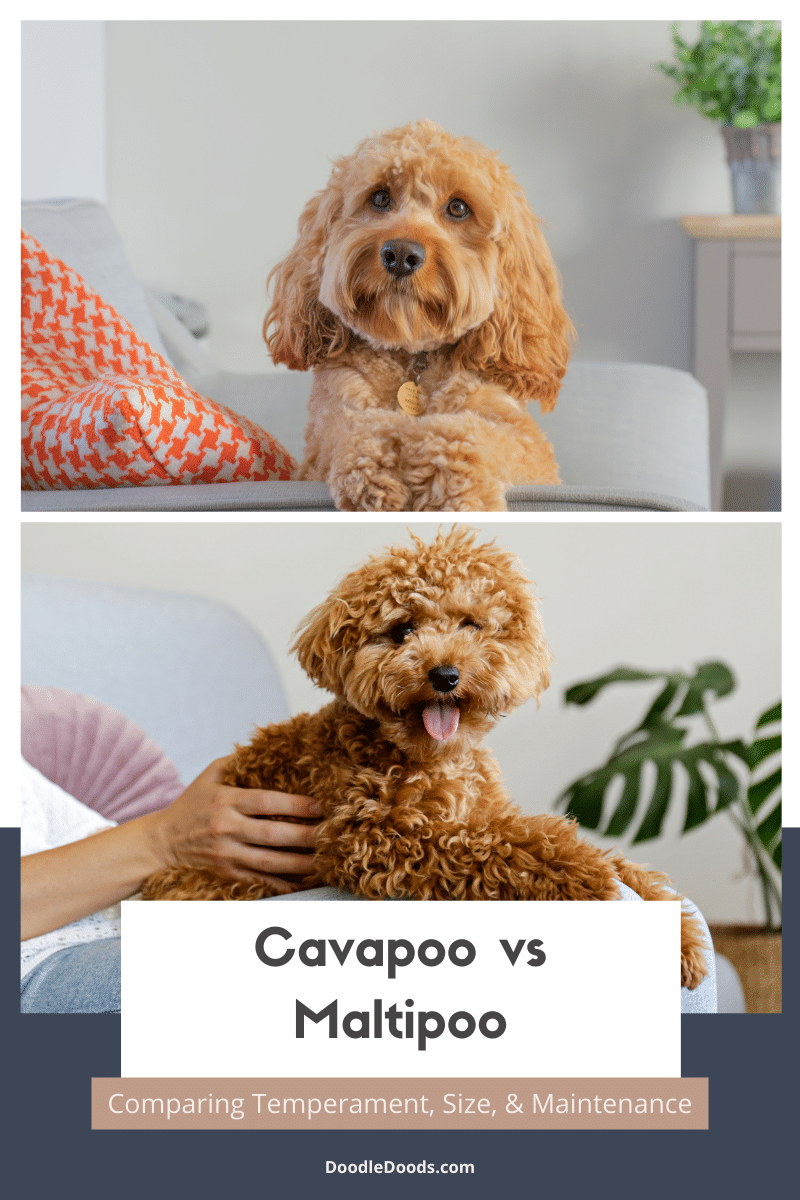Known as gentle giants, Pyredoodles are the definition of not judging a book by its cover. Some people may be put off by their size, but they are sweet and careful dogs. A cross between a Great Pyrenees and a Standard Poodle, they’re also known as Pyreneespoo, Pyrepoo, and a Pyreneesdoodle.
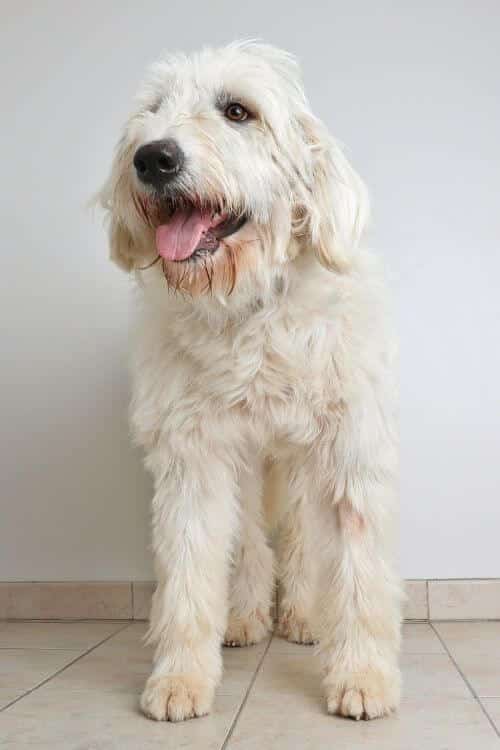
These Doods are an amazing family dog with a heart of gold. Imagine the cuddle sessions you can have with this fluffy pooch! They love children and often take on a guardian role in their life. Their protective nature extends throughout the house, making them a careful watchdog who may scare off intruders.
Before adopting a Pyredoodle, it is a good idea to be well informed of their personality, maintenance, and appearance so you know exactly what you’re signing up for. Let’s dive deep into everything you need to know about Pyredoodles!
Meet The Pyredoodle
Pyredoodles first began being bred in the 1980s in the USA, but rose in popularity in the early 2000s. Like most Doodles, they were bred with the desire to have more low-shedding dogs for those with allergies.
As a cross between the Great Pyrenees and the Standard Poodle, they are considered a designer breed. The American Kennel Club does not recognize any designer breeds.
They are large dogs, ranging from 85 to 100 pounds and 15 to 32 inches tall. Since they are a relatively new breed, there is a wider range of Pyredoodle sizes. Expect them to be large, but some may be smaller depending on the Poodle parent.
Since both parent breeds have such different coats, you can expect to see a large range of colors and coat types. Pyredoodles come in grey, white, apricot, cream, and black. They can be either solid or a mixture of colors.
Pyredoodles are prized for being the protectors of the house. While they are calm and gentle, they won’t hesitate to notify their owners of any threats. Don’t worry, they are almost always quiet and happy to simply lounge or play!
Larger dogs tend to have a slightly shorter lifespan than smaller ones. You can expect Pyredoodles to live anywhere from 10 to 12 years.
Great Pyrenees
What traits will a Pyredoodle inherit from a Great Pyrenees parent? Great is the perfect word for this dog. It encompasses not only their size but their attitude as well. Great Pyrenees are considered a working dog breed, originally bred to keep predators away from livestock in colder climates.
While they may look intimidating due to their size, they are actually very mellow dogs. Great Pyrenees have a calm nature but will be quick to spring into action if they sense a threat. Today, they are still often used as home guardians to protect from intruders and anything suspicious.
As a rather large dog, they can be up to 32 inches high and 100 pounds. They have a thick coat that is most often all white but may have grey, tan, or brown markings on it.
Poodle
Your Pyredoodle will also inherit some great Poodle traits as well. When you picture a Poodle, you think of a sophisticated and aristocratic animal. While they are most known for their poise, there is a lot more to them than meets the eye.
The second smartest dog breed in the world, they are renowned for their high IQ and ability to pick things up quickly. They are very versatile as a companion, athletic, and eager to please. A Poodle will listen to its owner well and likes to be the center of attention.
Poodles come in standard, miniature, or toy sizes, ranging from 6-60 pounds depending on the type. They come in black, white, or apricot colors.
Pyredoodle Behavior
These dogs look like giant teddy bears and they act like them, too! They are large, loving, and gentle. Many people may be cautious when they first encounter a Pyredoodle, but they are very kind-hearted animals.
They love the company of their owners, requiring lots of attention through play, cuddles, and praise. Since they are so patient, they make for a versatile dog. They will work well in a home with only one owner or a whole family.
While they do seek attention, they are more independent than you might think and can be prone to wandering. Great Pyrenees love to explore while Poodles are content staying home, so you may have a wanderer on your hands – or you may not! Pyredoodles will be happy to do their own thing in the backyard and enjoy exploring new places.
Despite their big size, Pyredoodles are rather timid dogs. They will be shy around strangers and may take a while to warm up to new people. This timidness may be prevalent their whole life. However, they do like the company of other animals. With proper introduction and socialization as a puppy, they can easily belong to a home with other cats and dogs.
Pyredoodles: The Household Protector
Did somebody ask for a babysitter? Extending from their Great Pyrenees traits as a watchdog, Pyredoodles love to look after small things such as children or any smaller animals. In a family setting, they will act as the children’s protector.
They are very calm dogs and work well as playmates, but they also are always on the lookout. If you are looking for a household guardian, they are a good fit.
Most Doodles are very friendly and will walk up to an intruder with a wagging tail. However, the Pyredoodle’s caution over strangers makes them one of the only Doodle watchdogs out there. They won’t be suspicious of people introduced to them by their owners but will be wary of any uninvited humans.
Training Pyredoodles
When you first begin training your Pyredoodle, you will notice quickly whether or not they take after their Poodle or Great Pyrenees parent. No matter what, they will be intelligent dogs. However, many will have a stubborn attitude to them that can get in the way of training.
The best way to approach training a Pyredoodle is by being consistent. Reward them regularly for doing the same activities so they can piece it together. A schedule helps make sure you dedicate time every day to training. All training sessions should be short, 5 to 10 minutes, and occur 2 to 3 times a day.
Because they are so gentle and kind, positive reinforcement and reward training are the best ways to teach your Pyredoodle basic obedience. They will respond well to this training method and it helps create a bond between owner and puppy.
Once you have the basic obedience down pat, you may notice that your Pyredoodle enjoys learning new tricks. Due to their playful attitude and smarts, they can learn some pretty fun tricks to show off to friends and family.
Exercise for Pyredoodles
For a large dog, Pyredoodles require less exercise than other large breeds. Considered to have medium energy levels, they require a half-hour to an hour walk every day. Play sessions should also occur between any walks.
Toys and games will help to keep your Pyredoodle busy and avoid any destructive tendencies that occur with any bored dog. Pyredoodles will do well in a home with a yard due to their large size and enjoyment of the outdoors.
If your Pyredoodle gets enough exercise, they can adapt to apartment living. Keep in mind that if you take them to an off-leash dog park, they tend to wander. If you want to crate train your Pyredoodle, ensure you have a large and comfortable crate for them to rest in while you’re away.
When they are puppies, they will be bursting with energy one moment and snoozing the next. It’s important to remember to take it easy when they are a puppy and still growing, as they are prone to joint issues later in life. Don’t overexert adult Pyredoodles to keep their joints in good condition.
Pyredoodles are prone to weight gain so providing enough exercise is a must. This should also be combined with good eating habits. A high protein diet keeps them well-nourished. They are likely to eat quickly and may need a feeding toy to prevent them from gobbling. Specific, frequent feeding times will work better to control weight gain than free-feeding.
Grooming Pyredoodles
When it comes to Pyredoodle coats, you will get quite a mixed bag. They can have straight hair if they take after the Great Pyrenees or wavy hair from their Poodle genes. White or cream is the most common color, but you can also find them in varying shades and mixes of black, apricot, and grey.
The Great Pyrenees breed sheds a ton. On the other hand, Poodles shed next to nothing. The combination helps to balance each other and you can expect your Pyredoodle to be a low to medium shedding dog. Depending on their coat, they may be allergy-friendly. For those with allergies, always meet a puppy before putting down a deposit even if they are labeled as hypoallergenic.
For first-generation Pyredoodles (direct breeding from a Poodle and Great Pyrenees), their coat is likely to be more varied. Second generation and further (breeding a Pyredoodle with another Pyredoodle) will have more consistency in their coats.
For dense coats, daily grooming is necessary to prevent any matting. Most Pyredoodle coats can get by with brushing twice a week. Invest in a good brush since you’ll be using it frequently!
Due to their floppy ears, they need inspecting every week. Look for any wax build-up and signs of infection. Your vet may also recommend a daily ear cleanser.
Single Or Double Coats
Pyredoodles can potentially have a single or double coat depending on what traits they inherit. A double coat occurs when there’s a shorter undercoat underneath the outer coat and oftentimes the hair is dense and woolly.
A single coat won’t have an undercoat and it can be long or short hair. Of course, single coats require less maintenance and grooming than a double coat. Poodles are considered single-coated.
Dogs with double coats will shed more often. Due to seasonal changes, double coats will shed twice a year. When brushing double coats, care must be made to ensure the undercoat is fully brushed.
If your Pyredoodle has a double coat, watch them in the sun. Their coat makes them well equipped for colder weather but their exposure to extreme temperatures should be limited.
Medical Concerns
Pyredoodles and other designer dogs have lower health risks. Crossbreeds as a whole tend to be healthier than their purebred counterparts. That being said, there are always a few medical concerns to look out for with a Pyredoodle dog.
- Bloat occurs when a dog’s stomach fills with gas, food, or fluid. Since the symptoms and pain can worsen quite quickly, take your dog to the vet if they experience any signs of discomfort after eating. To avoid bloat, don’t schedule any exercise or activity around mealtimes.
- Patella luxation is when a dog’s kneecap moves out of place. This can occur as they grow from a puppy into a full-grown Pyredoodle or as the result of an injury. Most dogs experiencing patella luxation will hold up their leg.
- Hip dysplasia occurs when the hip’s ball and socket grind together rather than moving smoothly. It can deteriorate the joint over time or result in a complete loss of function of the hip.
- Hypothyroidism affects the thyroid gland’s ability to regulate a metabolic rate. If it is underactive, the metabolism will slow down. This can result in noticeable weight gain for a Pyredoodle despite proper exercise and feeding.
Get ready for cuddles and an amazing companion if you adopt a Pyredoodle dog. Large dogs can be intimidating for some, but these doodles are the best to have around to change that perception. Adorable, gentle, and fun. Who wouldn’t want to love a Pyredoodle?
Learn How to Care for Your Doodle Puppy!

Perfect for first-time Doodle parents, get ALL your questions answered, including questions new Doodle parents don’t even think to ask.
Plus, get $700 worth of Bonus Materials for FREE, including:- Doodle Parenthood Community and Support Group ($190 value)
- Doodle Puppy Growth Tracker ($20 value)
- EMERGENCY Cheatsheet: When To Call The Vet Immediately ($50 value)
- HELP! Button ($145 value)
- And SO MUCH MORE!

